

Judging the West Highland White Terrier
Guide to judging Westies: Balance, type, movement, and temperament. Ensure the silhouette says ‘Westie’ at a glance.
Home » Meet The Breeds » West Highland White Terrier Dog Breed
The West Highland White Terrier, affectionately known as the “Westie,” is a purebred breed known for its distinctive white coat and lively personality. Originating in the rough and isolated glens and vales of Scotland, this small but robust terrier is not just a pretty face; it packs a lot of character and energy into a compact frame. Initially bred for hunting small rodents, the Westie today is a beloved companion, showcasing a blend of playfulness and independence.
Terrier
10 – 11 inches
15 – 20 pounds
13 – 15 years
| Country of Origin | Scotland |
|---|---|
| Bred For | Vermin Hunting, Companionship |
| Known For | Friendliness, Self-Esteem, White Coat |
| Popularity | High |
| Temperament | Alert, Courageous, Self-Reliant |
| Activities | Hunting, Ratting, Hiking, Conformation Shows, Dog Sports |
The West Highland White Terrier dog breed has a rich and storied history that traces back several centuries to Scotland. This breed’s journey from a working terrier to a beloved companion is filled with interesting facts and developments.
The origin of the West Highland White Terrier can be traced to the rugged terrain of the Scottish Highlands. They were initially bred for hunting and controlling the population of vermin, such as rats and foxes. The breed descends from several varieties of Scottish terriers, which were initially categorized more by their working abilities than their specific breed traits. It’s believed that the Westie shares a common lineage with other Scottish terriers like the Cairn Terrier, Scottish Terrier, and Dandie Dinmont Terrier.
A pivotal moment in the breed’s history occurred in the 19th century with Colonel Malcolm of Poltalloch. Legend has it that the Colonel accidentally shot and killed one of his wheaten-colored Cairn Terriers during a hunt. Distraught by this incident, he decided to breed only white dogs, which could be easily distinguished from game. This led to the development of the “Poltalloch Terrier,” which would later be known as the West Highland White Terrier.
The breed’s distinctive white coat was not only a practical choice for visibility during hunts but also became a hallmark of the breed, distinguishing it from other Scottish terriers. The coat is not just aesthetically pleasing but is also a functional feature, providing protection against harsh weather and rough terrain.
The West Highland White Terrier was officially recognized by the Kennel Club (UK) in 1907. The breed quickly gained popularity in Britain and beyond. The American Kennel Club (AKC) recognized the Westie in 1908. Over the years, the breed has become known not just for its hunting prowess but also for its spirited personality and adaptable nature, making it a popular choice for a family pet.
In addition to their role as companions, Westies have been featured in various forms of media and advertising, becoming somewhat of a cultural icon. Their charming appearance and lively disposition have made them favorites in television, movies, and print advertisements.
Today, the West Highland White Terrier is celebrated for its combination of a playful and friendly demeanor with a bold and confident spirit. While they may no longer be used primarily as working terriers, their legacy lives on in their strong personalities and adaptable natures, making them well-loved pets in homes around the world.
In terms of stature, an adult male West Highland White Terrier typically stands at 11 inches at the shoulder, while a mature female measures about 10 inches. Regarding weight, both males and females generally range from 15 to 20 pounds.
The body length of the West Highland White Terrier, between the withers and the root of the tail, is slightly shorter than the height at the withers, giving the breed a compact appearance. This short-coupled proportion contributes to the breed’s agility and robustness.
The Westie possesses a solid bone structure, with well-muscled legs and powerful hindquarters. Despite the breed’s small size, these dogs are substantial and generally hardy, a nod to their working roots.
Texture: The double coat of a West Highland White Terrier is a defining feature of the breed, characterized by its single color and unique presentation. The undercoat is soft and dense, offering adequate insulation in all weather conditions. The outer coat, by contrast, is hard and straight, and about two inches in length. This protective coat is typically shaped by hand-stripping: the head is shaped by plucking the hair in a rounded shape; the eyebrows are heavy; the ears are trimmed short; the neck and shoulders are shortened; shorter areas are blended into longer furnishings on the stomach and legs. The furnishings may be somewhat softer than the body coat, but soft, silky, or curly coats are unacceptable in the breed, as in an open or single coat.
A Note About Color: The namesake coat of the West Highland White Terrier may only be white, and any heavy wheaten coloration is undesirable in the breed.
The West Highland White Terrier has a relatively short tail, averaging 5 to 6 inches in length. It is carrot-shaped and set high on the croup. When erect, the tail is carried as straight as possible and does not curl over the back. The tail is never docked, and should not be long, thin or curled.
Owning a Westie is a delightful experience filled with energy, affection, and a touch of independence. These small, sturdy dogs are known for their friendly disposition and lively personality. While they make excellent companions, potential owners should understand the breed’s specific needs and characteristics to provide the best care.
The West Highland White Terrier is generally a healthy and hardy breed, reflecting its origins as a working terrier. However, like all breeds and mixed breeds, Westies are prone to certain health conditions. It’s crucial for prospective caretakers to be aware of these issues and collaborate closely with a reputable breeder and veterinarian to make sure that their Westie stays healthy throughout its life.
The average lifespan of a West Highland White Terrier is about 13 to 15 years. With attentive care, regular veterinary check-ups, and a proper diet, many Westies live full, vibrant lives.
Despite their overall robustness, West Highland White Terriers may be predisposed to specific health concerns, including:
Consistent veterinary care is vital for early detection and management of these conditions. Besides regular wellness checks, specific screenings for skin, knees, lungs, eyes, and hearing should be considered to maintain the health and well-being of a West Highland White Terrier.
The West Highland White Terrier boasts a personality that is as distinctive as its appearance. These terriers are renowned for their bold, confident, and friendly nature. They are spirited and full of life, often displaying a level of self-assuredness that belies their small stature.
Westies are known for their adaptability, making them suitable for a variety of living situations, including with novice owners. However, their independent streak means they benefit from consistent, patient training. This breed’s sensitivity level is moderate; they respond well to positive reinforcement but may not react favorably to harsh or heavy-handed methods.
When it comes to being alone, the Westie can manage some time by itself, but like all dogs, they prefer the company of their humans and should not be left alone for extended periods. They generally do well with other dogs, especially if they have been socialized from a young age. Their prey drive, stemming from their hunting heritage, means caution is advised around smaller pets.
The breed’s demeanor with young children is typically good, particularly if the dog has been raised with children from a young age. Supervision is always recommended, however, to ensure safe interactions. In terms of friendliness towards strangers, Westies are usually welcoming but can be initially reserved. Once they warm up, they often become friendly and sociable.
Feeding a West Highland White Terrier requires attention to their specific dietary needs to make sure that they maintain optimal health and energy levels.
When feeding a Westie puppy, it’s important to provide a diet formulated for small breeds with high energy levels. These diets typically contain the right balance of protein, fats, carbohydrates, vitamins, and minerals to support their rapid growth and development. Puppies should be fed three to four times a day to accommodate their smaller stomachs and higher metabolic rate.
As the Westie matures into adulthood, their feeding schedule can be adjusted to two meals per day. Adult Westies typically require a well-balanced diet that includes high-quality dog food. The amount of food, usually measured in cups per day, depends on the dog’s size, age, activity level, and metabolism. On average, an adult West Highland White Terrier might require about ½ to 1 ½ cups of dry dog food per day, divided into two meals. However, this can vary, and it’s essential to monitor the dog’s weight and adjust portions as necessary to avoid overfeeding.
It is also crucial to consider the breed’s potential for food sensitivities or allergies when choosing their diet. Some West Highland White Terriers may have a predisposition to skin allergies, which can be exacerbated by certain foods. Consulting with a veterinarian to tailor a diet that suits an individual dog’s health needs is always a wise approach.
Training a West Highland White Terrier can be a rewarding and sometimes challenging experience due to their intelligent yet independent nature. Westies are smart dogs with a streak of stubbornness, so patience and consistency are key in their training.
Westies generally respond well to training, especially when it is started early and uses positive reinforcement techniques. They are eager to please and can learn a variety of commands and tricks. However, due to their independent nature, they may sometimes choose to follow their own agenda. Therefore, training sessions should be kept short, fun, and engaging to maintain their interest.
This breed’s intelligence means they catch on quickly, but they can also become bored with repetitive tasks. Introducing variety and challenges in training routines can help keep a Westie engaged. They are also known for their vocal nature, so training to manage their tendency to bark is often necessary. Teaching commands like “quiet” or “enough” can be beneficial in controlling excessive barking.
When it comes to wanderlust potential, Westies, owing to their terrier heritage, may have a tendency to chase and explore. Providing them with a secure environment and teaching reliable recall commands are important for their safety. They also have a natural predation instinct, which may manifest in chasing small animals or moving objects, so early socialization and training in this aspect are crucial.
The exercise needs of a West Highland White Terrier are an important aspect of their overall care and well-being. Despite their small size, Westies are energetic and active dogs that require regular physical and mental stimulation.
| Energy Level | Moderate to High |
|---|---|
| Exercise Requirements | 1 Hour/Day (Minimum), Daily Walks, Vigorous Running, Regular Exercise, Playing with Another Dog, Mental Stimulation |
Westies have a moderate to high energy level, reflecting their terrier heritage. They benefit from daily walks, play sessions, and opportunities to explore safely in a fenced yard or park. The intensity of their exercise should be balanced; while they enjoy being active, they do not require excessively strenuous activity. A mix of walks, interactive play, and mental stimulation through training exercises or puzzle toys is ideal for keeping a Westie engaged and healthy.
Their playful nature makes them enthusiastic participants in games like fetch, tug-of-war, and hide-and-seek. These activities not only provide physical exercise but also help to strengthen the bond between the Westie and their human companion. In addition, mental exercises such as learning new tricks or navigating simple agility courses can be beneficial for keeping their minds sharp and satisfied.
It’s important to monitor their exercise routine, especially as they age. While young Westies are usually full of energy, older dogs may need shorter or less intense exercise sessions. Regular, moderate exercise helps maintain their muscle tone, joint health, and overall fitness, preventing issues like obesity.
Grooming a West Highland White Terrier is an essential aspect of their care, crucial not only for maintaining their distinctive appearance but also for their overall health. The breed’s beautiful white coat requires regular attention to keep it in top condition.
| Coat Type | Double, Straight, Hard, Medium Length |
|---|---|
| Grooming Requirements | Weekly Brushing, Occasional Bathing, Intermittent Hand-Stripping, Routine Ear Cleaning, Periodic Nail Trimming, Regular Tooth Brushing |
The coat of a West Highland White Terrier is relatively easy to groom despite its appearance. Their double coat, consisting of a soft undercoat and a harder outer coat, needs to be brushed regularly to prevent matting and to remove dirt and loose hair. Brushing a couple of times a week is generally sufficient, but during shedding seasons, more frequent brushing may be required to manage increased shedding.
In addition to regular brushing, the breed’s coat should be trimmed every few months to maintain its shape and health. Professional grooming is often recommended to achieve the breed’s distinctive look, particularly around the face and ears.
Shedding is moderate in West Highland White Terriers. Regular grooming helps to minimize the amount of hair shed and keeps their coat bright and clean. Caretakers should also pay attention to other grooming needs, such as nail trimming, ear cleaning, and dental care.
Living with a West Highland White Terrier is a rewarding experience, offering a blend of companionship, energy, and character. Understanding their specific needs and characteristics is key to creating a harmonious living environment for these spirited little dogs.
West Highland White Terriers adapt well to apartment living, thanks to their small size. However, their active nature means they still require adequate exercise and mental stimulation, regardless of the living space. Regular walks and playtime are essential to keep them happy and healthy in a smaller home.
When it comes to weather adaptability, Westies are quite versatile. Their double coat provides insulation, making them relatively comfortable in cooler climates. However, it’s important to protect them from extreme cold, as they are not immune to the effects of very low temperatures. In colder weather, a sweater or coat can help keep them warm during outdoor activities.
In contrast, hot weather requires extra precautions for a West Highland White Terrier. Their white coat can be susceptible to sunburn, so it’s important to provide shade and avoid prolonged exposure to direct sunlight. Making sure that they have access to fresh water and a cool place to rest is crucial during warmer months. Exercise should be done during cooler parts of the day to prevent overheating.
Bringing a West Highland White Terrier puppy into your home is an exciting and rewarding experience. These puppies, with their bright eyes and playful antics, are sure to bring joy and laughter to any household. However, raising a Westie puppy requires commitment, patience, and an understanding of the breed’s specific needs during their formative months.
Caring for a West Highland White Terrier puppy begins with creating a safe and nurturing environment. Puppies are naturally curious and full of energy, so it’s important to puppy-proof your home, removing any hazards that could pose a risk to their safety.
Nutrition is crucial during this stage. Feeding a high-quality puppy food formulated for small breeds is essential to support their growth and development. Puppies typically eat three to four small meals per day. It’s important to maintain consistent feeding times and control portion sizes to prevent overfeeding and promote healthy growth.
Early socialization and training are key components of puppy care. Introducing your Westie puppy to a variety of people, animals, and environments helps them develop into well-rounded and confident dogs. Basic training, including housebreaking, crate training, and learning simple commands, should start early. Positive reinforcement techniques work best, as they encourage good behavior in a gentle and effective manner.
Regular veterinary check-ups are also important for monitoring your puppy’s health. Vaccinations, deworming, and general health assessments are part of a preventative care routine that helps ensure a healthy start in life.
Exercise for Westie puppies should be age-appropriate. Short, gentle play sessions are better than strenuous exercise, as their bones and joints are still developing. Mental stimulation through interactive toys and simple puzzles can help keep their active minds engaged.
Finally, grooming should be introduced early. Regular brushing from a young age helps Westie puppies get used to the grooming process, setting the stage for easier grooming sessions as they grow.
West Highland White Terriers are energetic and agile dogs, making them well-suited for a variety of activities and dog sports. These pursuits not only provide physical and mental stimulation for the Westie but also strengthen the bond between dog and handler. Here are some activities and dog sports in which West Highland White Terriers often excel:
Participating in these activities and sports can be a fulfilling way to channel their energy and intelligence. Whether for competition or fun, they provide an opportunity for Westies to shine and for owners to enjoy their unique capabilities and personalities.
The West Highland White Terrier is recognized by the world’s leading registries and kennel organizations, which categorize the breed into a specific Group based on its unique characteristics. This breed is recognized worldwide under the following Group designations:
| Organization | Group Designation |
|---|---|
| AKC (American Kennel Club) | Non-Sporting |
| UKC (United Kennel Club) | Companion Dog |
| CKC (Canadian Kennel Club) | Non-Sporting |
| ANKC (Australian National Kennel Council) | Non Sporting |
| RKC (The Royal Kennel Club) | Utility |
| FCI (Fédération Cynologique Internationale) | Group 9 – Companion and Toy Dogs; Section 11 – Small Molossian Dogs |
The ideal West Highland White Terrier is described by a Breed Standard that is approved by each of the world’s leading registries and kennel organizations. The Breed Standards for this breed may be found in the following links:
| Organization | Breed Standard |
|---|---|
| American Kennel Club | AKC West Highland White Terrier Breed Standard |
| United Kennel Club | UKC West Highland White Terrier Breed Standard |
| Canadian Kennel Club | CKC West Highland White Terrier Breed Standard |
| Australian National Kennel Council | ANKC West Highland White Terrier Breed Standard |
| The Royal Kennel Club | RKC West Highland White Terrier Breed Standard |
| Fédération Cynologique Internationale | FCI West Highland White Terrier Breed Standard |
West Highland White Terrier clubs across the globe play a pivotal role in the promotion and preservation of this beloved breed. These clubs, dedicated to the Westie, offer a wealth of resources, ranging from breed-specific information and health initiatives to organizing events and supporting rescue efforts.
In the United States, the West Highland White Terrier Club of America stands as the official national club for the breed. It serves as a comprehensive resource for Westie owners and enthusiasts, providing valuable insights into the breed’s care, health, and training. The club is also active in hosting various events, including specialty shows and educational seminars, fostering a sense of community among Westie lovers.
The West Highland White Terrier Club of Canada mirrors these efforts in Canada, focusing on the welfare and promotion of the breed within the country. It acts as a hub for Canadian Westie owners, offering guidance on breed standards, health care, and rescue operations. The club’s involvement in organizing dog shows and social gatherings creates opportunities for Westie enthusiasts to connect and share their experiences.
The West Highland White Terrier Club of England, one of the oldest clubs dedicated to the breed, upholds the legacy and standards of the Westie in the United Kingdom. Their commitment to the breed extends to organizing events, participating in health research, and offering breed-specific advice to owners and breeders.
Joining or engaging with these clubs provides West Highland White Terrier enthusiasts with a wealth of knowledge and opportunities to connect with others who share the same passion for this iconic breed.
Rescue groups play a vital role in providing care and finding new homes for West Highland White Terriers in need. While breed-specific rescue organizations may not be as prevalent for Westies as they are for some other breeds, there are dedicated groups that focus on the welfare of these charming dogs.
In the United States, several local rescue groups specialize in West Highland White Terriers. These organizations, such as Westie Rescue of California and Seven Western States, work tirelessly to provide care, rehabilitation, and rehoming services for Westies. They operate primarily in specific regions, offering a network of support that includes foster care, medical treatment, and assistance in finding permanent homes for rescued Westies.
In the United Kingdom, organizations like UK Westie ReHoming and Westie Rescue Scheme are committed to the breed, offering similar rescue and adoption services. They provide a valuable service by taking in Westies that need new homes, whether due to changes in their owners’ circumstances or other reasons.
For those in regions without a breed-specific rescue group for West Highland White Terriers, local animal shelters and all-breed rescue organizations are often the best resources. These shelters can sometimes have Westies and other terrier breeds available for adoption. They provide an opportunity for individuals looking to adopt a Westie to give a loving home to a dog in need.
West Highland White Terriers do shed, but their shedding is generally considered moderate. Their double coat, consisting of a soft undercoat and a harder outer coat, requires regular grooming to manage shedding. Brushing a few times a week helps to remove loose fur and keep shedding under control.
While no dog breed is completely hypoallergenic, Westies are often considered a good option for people with allergies. Their coat type and moderate shedding tend to produce fewer allergens compared to many other breeds. However, individual sensitivities vary, so spending time with a Westie before adopting is advisable.
West Highland White Terriers have a relatively long lifespan, typically living between 13 and 15 years. With proper care, regular veterinary check-ups, and a healthy lifestyle, many Westies can enjoy a life towards the upper end of this range.
Common causes of death in West Highland White Terriers include age-related conditions such as heart disease and cancer. Like many breeds, they can also be susceptible to specific hereditary health issues. Regular health screenings and a healthy lifestyle can help mitigate some of these risks.
West Highland White Terriers are excellent family dogs. They are known for their friendly and affectionate nature, and they typically get along well with children. However, as with any breed, early socialization and proper training are important for fostering positive family interactions.
West Highland White Terriers are a small breed. Males typically stand about 11 inches at the shoulder and weigh 15 to 20 pounds, while females are slightly smaller, usually about 10 inches in height and weighing slightly less.
Westies can be vocal and may bark more than some other breeds. This trait stems from their terrier heritage and their role as alert watchdogs. Proper training and socialization can help manage their tendency to bark.
Westies can get along with cats, especially if they are raised with them from a young age. However, due to their strong prey drive, careful introductions and supervision are important when they are around cats or other small animals.
West Highland White Terriers are known for their intelligence. They are quick learners and can be quite clever in their actions. Their smartness, coupled with their independent nature, can sometimes make training a challenge but also rewarding.
Westies can adapt well to apartment living due to their small size. They do require regular exercise and mental stimulation, so daily walks and playtime are important, even in a smaller living space.
Westies can be a good choice for first-time dog owners, as they are relatively easy to care for and train. Their friendly disposition and manageable size make them a manageable and rewarding breed for those new to dog ownership.
West Highland White Terriers can be great companions for seniors. Their size makes them easy to handle, and their affectionate nature can be a great source of comfort. However, their exercise needs should be considered to make sure that they are a good fit for a senior’s lifestyle.
West Highland White Terriers generally get along well with other dogs, especially if socialized from a young age. Their playful and sociable nature often makes them good companions for other canines, though their terrier temperament can sometimes lead to assertiveness.


Guide to judging Westies: Balance, type, movement, and temperament. Ensure the silhouette says ‘Westie’ at a glance.


Dawn L. Martin shares her experience judging West Highland White Terriers at Montgomery and her optimism for the breed’s bright future.


Linda Servin is the breeder behind Elsinore West Highland White Terriers. Read about the kennel’s beginnings, puppies, and much more!


Dr. Gerry Meisels is the breeder behind White Oaks Kennel West Highland White Terriers. Read about the kennel, dogs, puppies, photos & more!
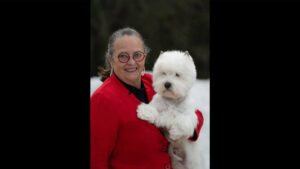

Lindy Barrow is the breeder behind Skyehigh Westies West Highland Terrier. Read about the kennel’s beginnings, Skyehigh Westies puppies.
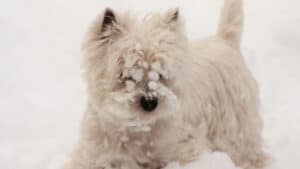

Westies are smart, fun companions who love adventures. Learn their quirks, training tips, and grooming essentials in this guide.
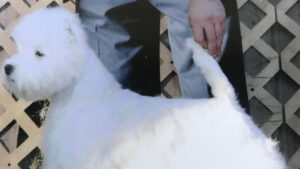

Discover the origins, traits, and true type of the West Highland White Terrier, bred for tenacity and excellence.
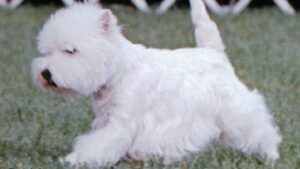

Discover the curious, happy, and sometimes stubborn nature of West Highland White Terriers and their fascinating history.


Guide to judging Westies: Balance, type, movement, and temperament. Ensure the silhouette says ‘Westie’ at a glance.


Dawn L. Martin shares her experience judging West Highland White Terriers at Montgomery and her optimism for the breed’s bright future.


Linda Servin is the breeder behind Elsinore West Highland White Terriers. Read about the kennel’s beginnings, puppies, and much more!


Dr. Gerry Meisels is the breeder behind White Oaks Kennel West Highland White Terriers. Read about the kennel, dogs, puppies, photos & more!


Lindy Barrow is the breeder behind Skyehigh Westies West Highland Terrier. Read about the kennel’s beginnings, Skyehigh Westies puppies.


Westies are smart, fun companions who love adventures. Learn their quirks, training tips, and grooming essentials in this guide.


Discover the origins, traits, and true type of the West Highland White Terrier, bred for tenacity and excellence.


Discover the curious, happy, and sometimes stubborn nature of West Highland White Terriers and their fascinating history.
The best way to ensure a long and happy relationship with a purebred dog is to purchase one from a responsible breeder. Not sure where to begin?
Contact the National Parent Club’s Breeder Referral Program, which is listed on the AKC Breeder Referral Contacts page.
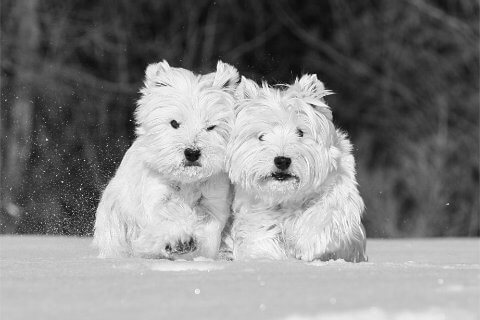
"*" indicates required fields
This site is protected by reCAPTCHA and the Google Privacy Policy and Terms of Service apply.